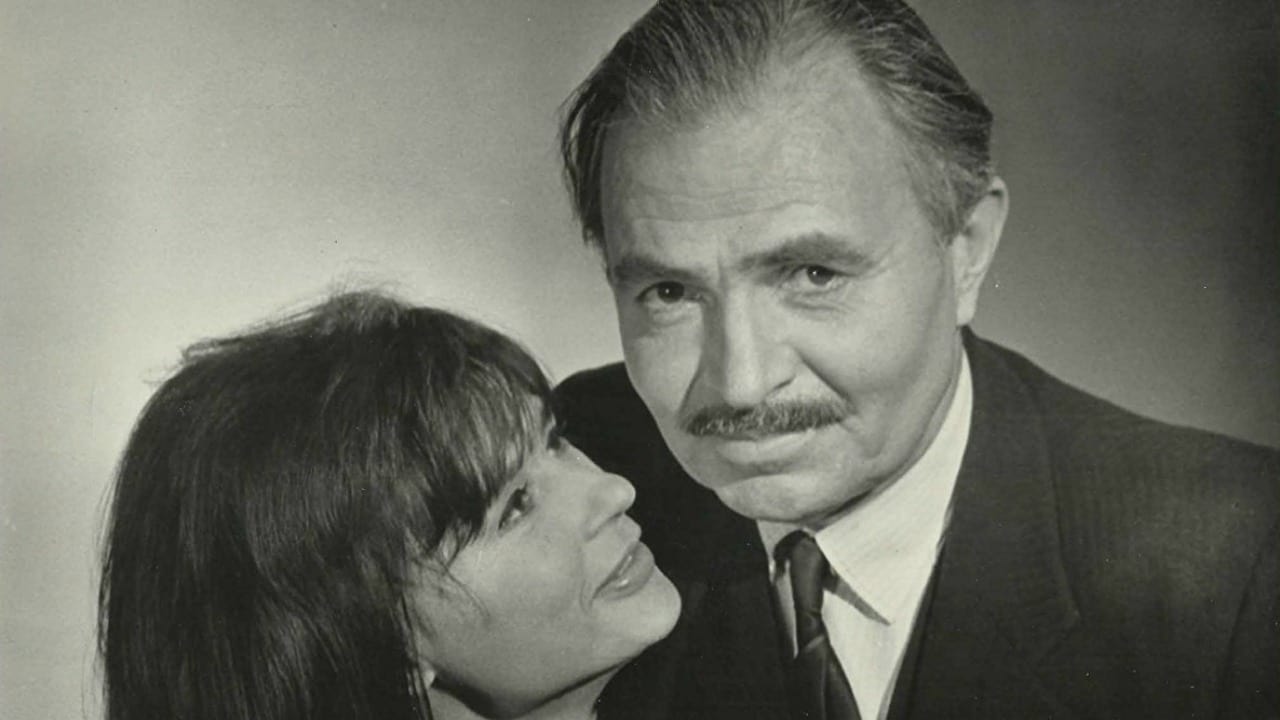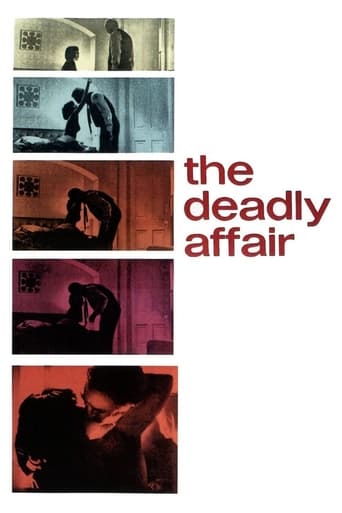

Well Deserved Praise
... View MoreSelf-important, over-dramatic, uninspired.
... View MoreIt isn't all that great, actually. Really cheesy and very predicable of how certain scenes are gonna turn play out. However, I guess that's the charm of it all, because I would consider this one of my guilty pleasures.
... View MoreThis is a must-see and one of the best documentaries - and films - of this year.
... View MoreI can't recall how many times I have seen this film, commencing with its initial release, but it gets better every time. Can films mature with age like Volnay and Pommard? I see more in it now than I did before. Does this mean that I no longer have presbyopia? In this latest viewing, I realized for the first time the true enormity of the genius shown by Simone Signoret in her part which has very little dialogue. All she has to do is move her eyes, and we stir with emotion. This film is based on the John le Carre novel CALL FOR THE DEAD, and was the second of his novels to be filmed, the first being THE SPY WHO CAME IN FROM THE COLD (1965), which came out a year earlier. This is very much a film about people, and is only incidentally a spy tale. It is of course brilliantly made, with Sidney Lumet excelling himself, and all the actors at their very best. I spent one day on the set of this film in the spring of 1966, at Twickenham Studios. The only one of the actors who was there that day was James Mason. It was the only time I ever met him. We chatted for a while. For those who are interested, I can say that in person James Mason was exactly like James Mason on screen. What you saw was what you got. He really was James Mason, it's as simple as that. With many actors and actresses you meet somebody else entirely, but with him there was that same soft voice and gentle polite manner, in which he appears to be confiding in you as a dear friend. What a delightful fellow he was. So I never got to meet Simone Signoret, a great loss. I talked for a while with Lumet, who shocked me by saying that he would be happy to abandon celluloid and start making movies on video tape. He was a highly intelligent and very pleasant man. I spent much more time chatting with the cinematographer Freddie Young and his operator Brian West, both of whom I already knew. Freddie talked to me more on that day that at any other time. He waxed lyrical on his theories of lighting, put his hands in the air to show the rays of light coming down at different angles, and even showed signs of excitement. Freddie, who was the most sedate and calmest of men, never usually gave any indication of being excited about anything. He could calm any hysterical actor or actress simply by looking at them and smiling in a friendly fashion. Brian was the same. They were truly The Silent Ones on both set and location. Nervous directors instantly felt at ease in their presence. But what Freddie was most excited to tell me was that he had perfected a new technique on this film. He said that Sidney had wanted to have a visual effect of gloom in the film, and asked Freddie if he knew how to do that. So Freddie came up with what was then a brilliant new idea, though used continually ever since by everyone while celluloid was still in use. I asked him what was this new technique. And he answered with barely restrained enthusiasm: 'The film is 30% flashed.' I said what do you mean 'flashed'? He said that he had taken the celluloid out of the cans and pre-exposed it to light under carefully controlled conditions. He did many experiments and found that 30% exposure was just right. That made the finished film look subtly washed-out in the gloomy way that Sidney wanted, but while retaining its colour sufficiently. He was so proud of this achievement, which was the result of very prolonged experiments over a period of weeks prior to shooting. What fine fellows Freddie and Brian were. 'They don't make 'em like that anymore.' The other person I met that day was the young feminist campaigner, Gloria Steinem, who was visiting Sidney in her role as journalist to write an article about him and the film. She was super-glamorous in those days, really something! Most of the men on set hardly dared look at her, lest their desires overwhelm them. I steeled myself against this onslaught of pulchritude, overlookng the fact that she was irresistible and pretending I had not noticed, so that she and I chatted away for ages, and she was so effusively friendly that she insisted on giving me an introduction to her great friend Bob Brown at ESQUIRE, whom I thus later befriended. But her main enthusiasm was because I had been on friendly terms with her chum from COSMOPOLITAN, Helen Gurley Brown, or should I say Helen Girlie Brown. But then that is another story. You never know what is going to happen on a film set, though the answer to that (if you ask any bored actor waiting between shots): usually nothing. Now as to this film, it is simply superb, and everyone should see it immediately. Sidney also had the exquisite taste to cast the Swedish actress Harriet Andersson as James Mason's young nymphomaniac wife. Those of us who haunted the art houses in those days knew her from the Ingmar Bergman films, and then suddenly there she was in an English language film, and of course she does very well. The recipe for a good film is often: 'throw in one Swede or two Danes, and stir'. Just look at Bergman's protégé Max von Sydow to see how far they can go in the world of international cinema. And it is always good to see the wonderful British character actor Harry Andrews in films, here playing a sleepy retired police inspector who keeps nodding off. It is all just terrific, and every bit a superior John le Carre film. In fact it is even better, being a genuine classic.
... View MoreMilitary Intelligence operative in London investigates a man from the Foreign Office division whose past included a youthful interest in Communism; satisfied with the amicably-concluded interview, the operative is awoken the next morning to learn his subject apparently committed suicide. Fearing it was actually murder--and afraid now for his own safety--he goes against the wishes of his supervisors and partners with a retired police inspector to uncover the truth behind the man's demise. Stylishly-presented but grindingly slow and downbeat spy yarn, adapted by Paul Dehn from John le Carré's debut novel "Call for the Dead". Freddie Young's pre-saturated color cinematography is terrific, and Quincy Jones supplies a subtle jazz score, but this cast of characters is simply not compelling. In the lead, James Mason never modulates his clipped diction and dry, hollowed-out voice, but supporting players Simone Signoret, Maximilian Schell and a sweetly-clumsy Lynn Redgrave add a bit of dimension to the enervated script and handling. ** from ****
... View MoreI can't say I had heard of "The Deadly Affair" before, and it was a pleasant surprise. It had all the elements of a good spy/ murder mystery and with good acting performances all around. The always dependable James Mason was, well, dependable but seemed somewhat fatigued throughout the film and without his usual overbearing persona. Harry Andrews was his sidekick as an old policeman friend dragooned into helpful service. I am saving my best comments for Simone Signoret, who was always one of the best. She does not disappoint as the concentration camp survivor-wife of the victim in a sympathetic, heart-rending portrayal of a woman exhausted by a life of disillusionment and brutality. Can't say I've ever seen her give a bad performance.The film does not move quickly, due mainly to a sub-plot concerning Mason's on-screen wife's nymphomania. His wife is played by Harriet Andersson who is completely wasted in this superfluous role - at least 15 minutes could have been saved by eliminating her role altogether. The other complaint I had was with the 60's background music, the Bossa Nova-beat stuff that was so popular at the time but sounds so, um, 60's and crappy nowadays. I know, I know, it's Quincy Jones but it's still dated. Otherwise, the story is a tense whodunit played out in stark, impersonal Cold War London, with several plot twists and several suspects to choose from. It is worth your time next time it comes on.
... View MoreI caught this on TCM and figured with a cast that included James Mason and Simone Signoret and direction by Sidney Lumet, it would be worth watching. I was wrong. It is ponderously slow, with uninteresting characters and a plot that is even less interesting. There is absolutely no reason to care about the "suicide" victim in the story, and even less reason to care if James Mason solves the crime. And since we didn't care, my wife and I turned it off halfway through. I'm a huge fan of Cinematographer Freddie Young, but the photography here is drab and desaturated -- it's no doubt the "look" the filmmakers wanted, but it's not a pleasure to look at. Plus, there's a subplot about Mason's nymphomaniac wife which has nothing to do with anything, other than to make Mason an even less likable protagonist. IMO, there's a reason this isn't available on DVD: it's terrible!
... View More